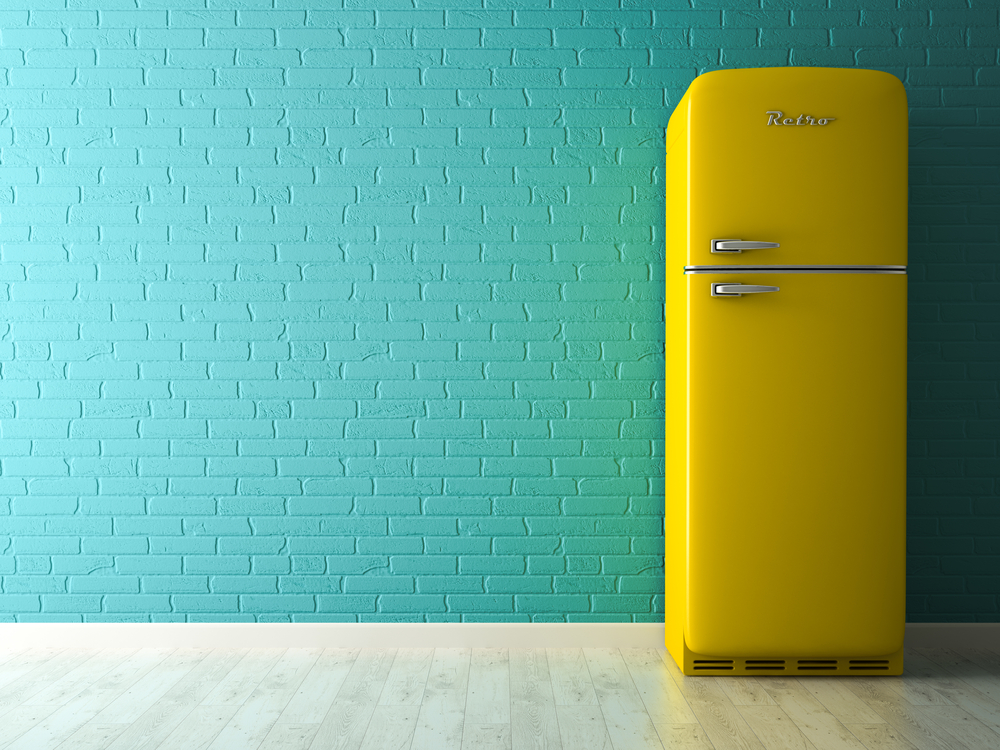It’s been said that the kitchen is the center of a household, where the whole family congregates and shares meals, stories, and memories. Understanding how your kitchen’s layout, design, and use effects your utility bill allows families to make the most of their most-used space, all while cutting spending. Saving energy in the kitchen doesn’t mean running out to the store to purchase an entire new line of energy efficient appliances, but rather revolves around regular maintenance and a few easy DIY repairs. Get started on your path to saving with these great tips on how to save energy in your kitchen.
1. Focus on the Fridge
It’s no secret that our refrigerator is one of the biggest energy hogs in our homes due to its constant on and off cycles. It’s estimated that, aside from a HVAC system, the refrigerator consumes more energy than any other appliance in the home. A great place to start is to adjust the thermostat within the fridge. Refrigerators require a temperature between 37 and 40 degrees to safely store perishable foods, while a freezer should be set between 0 and 5 degrees. Have an extra fridge in the garage or pantry for drinks? Odds are, it’s an older model and even less energy efficient than the one you are running in your kitchen. Pull the plug on the beer fridge and just shuffle drinks in and out of your current fridge.
2. Show Your Oven Some Lovin’
Whether your oven operates on gas or electric, operating this appliance can prove to be quite costly if used regularly. A great way to not only save a few bucks on operating costs, but also keep your kitchen safer, is to cut the heat a few minutes before cook time is completed. For anyone who has ever bumped into a hot stove top, you can attest that they stay VERY hot for quite a while after you turn them off.
3. Check Your Seals
Everyone loves a kitchen with large windows that let tons of natural light in, but many times, those windows are actually a major source of cooled or heated air loss. Since the kitchen is one room in the house that is susceptible to large temperature swings due to cooking and appliances, HVAC systems tend to work overtime while cooking. If a leaky seal around a window allows air out, the HVAC system is working just as hard to cool or heat the outside of your window as it is the inside. In addition to windows, if your kitchen has any doorways that lead to a garage, pantry, or outside, be sure to check seals and fitment of the door to ensure that there are no major gaps.
4. Dishwasher 101
Old time television shows always show families lined up in the kitchen, with mom and dad doing the dish washing in the sink, while one kid dries dishes and the other puts them away. While it may be a great way to get everyone together, washing a full load of dishes by hand in the sink will utilize 37 percent more hot water than if you loaded them into the dishwasher. Be sure to check the temperature setting on your dishwasher. The heated dry feature may be nice to quickly dry off everything, but an air powered dry or overnight dry setting will reduce the need for the dishwasher to continue drawing energy after the wash cycle is completed.
Focusing some time and effort on your kitchen can pay off in the long run. Careful use of appliances can provide savings upwards of $200 per year, and a thorough look through to spot out any leaky seals in the kitchen can save you even more on heating and cooling costs. What are some of the ways that your kitchen is set up to help saving you some green, all while making sure the space is a green and energy efficient as possible? Leave us a comment with some of your techniques, and we may feature them in our next blog!

